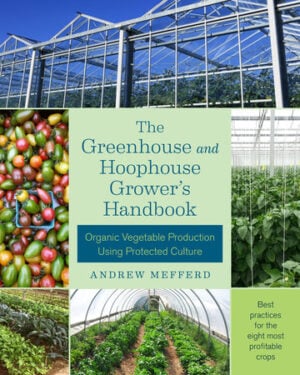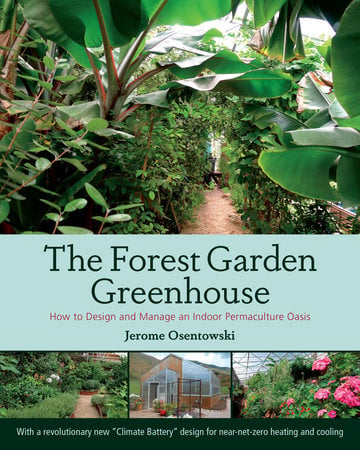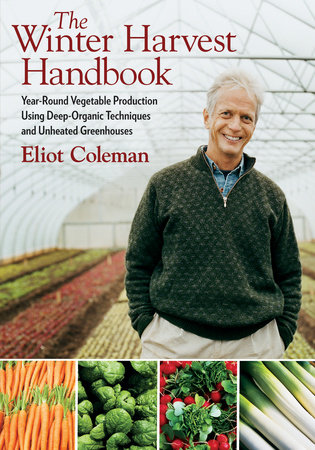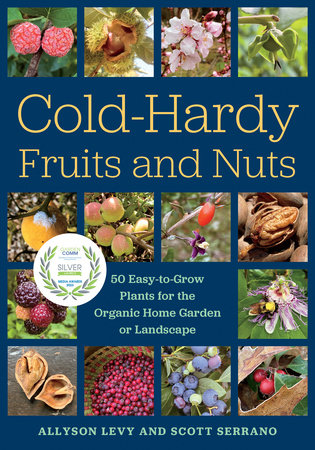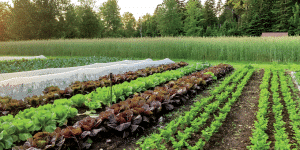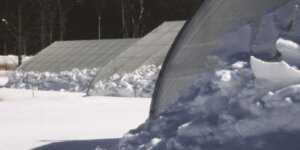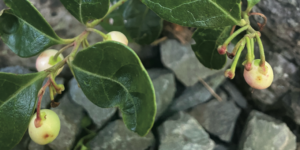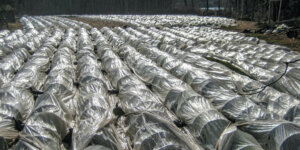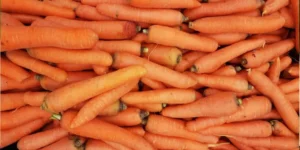Is Your Greenhouse Winter-Ready? Dealing with Snow on Your Greenhouse
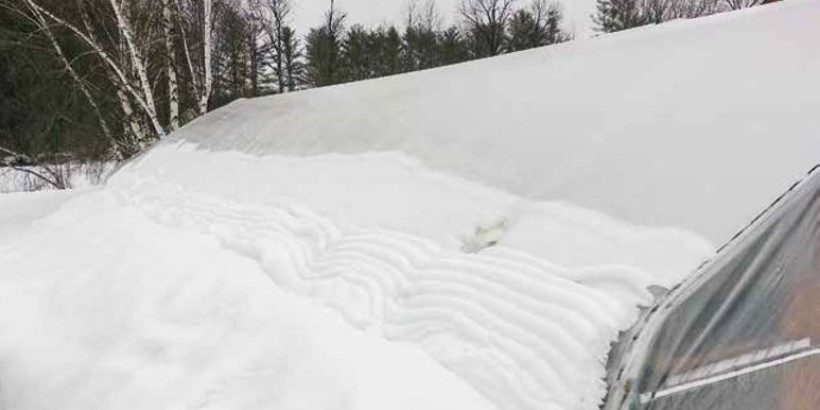
Want to keep your protected crops heated and healthy all season? Get your greenhouse ready for winter with these snow removal tips!
The following is an excerpt from The Greenhouse and Hoophouse Grower’s Handbook by Andrew Mefferd. It has been adapted for the web.
(Photographs courtesy of Andrew Mefferd unless otherwise noted.)
Dealing with snow starts at the planning stage of building a structure. Hoophouse and greenhouse growers have very different options when it comes to snow, since greenhouse growers can melt it off while hoophouse growers cannot. Snow removal in an unheated structure depends on shedding.
Snow on the Hoophouse
In snowy areas, it’s unwise to build gutter-connected hoophouses, and the plastic should also be removed from lightweight, gutter-connected field tunnels prior to the snowy season. When snow builds up in the gutters of an unheated structure, there’s no good way to remove it.
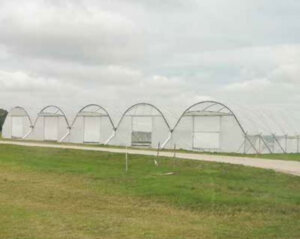
These field tunnels have been customized for winter growing in Florida by adding sides for cold days, fold-down vents at the peak for hot days, and pipes attached to the gutters to direct water away from the structure.
If you live in an area where you can expect to get a substantial amount of snow and want to build a hoophouse, you’ll need to build a different type of structure than growers who rarely see snow. The shape makes a big difference. Gothic houses with peaked roofs shed snow much better than Quonset designs with gradually curved roofs.
Spacing in Hoophouses
The other big factor that will help a hoophouse make it through the winter is the spacing of the bows. Some hoophouses in low-snow areas are built with bows spaced 6 feet (2 m) apart. This reduces both the number of bows and the cost compared with building with bows every 4 feet (1.2 m).
Though it’s tempting to use a wider spacing, 4-foot bow spacing is standard in areas that expect to see snow. This will help the structure support more snow before collapsing.
Weather Conditions
No structure is immune from collapse. Anyone with a hoophouse must stay on top of storm conditions and be ready to remove the snow if it builds up quickly. Light snow usually isn’t a problem if the structure is sturdy in the first place—the sun can melt it off later. But growers who live in snowy areas should always have a plan for snow removal before it starts snowing.
A roof rake looks like a very long-handled, lightweight hoe, and can come in handy for removing snow, since it’s able to reach high up on a hoophouse and pull the snow off. I wrap mine in a towel to keep it from scratching the covering.
Another option is to remove the plastic over the winter, or roll it up to the peak of the structure, to avoid snow building up in the first place. An added advantage is that when you let it rain and snow in the hoophouse, salts that can build up in the soil over time in covered growing get flushed out.
Snow on the Greenhouse
Though gutters are problematic for snow removal on hoophouses, they’re often the best way to remove snow on greenhouses. Many greenhouses in snow-prone areas have a heating pipe installed immediately below each gutter, so that if snow starts building up, the gutter heaters can be turned up high to melt it. The meltwater will flow down the gutter and make space for more snow to slide into the gutter and melt.
This is more efficient than heating the whole greenhouse to melt the snow, because a smaller area (the gutter) can be heated up to a higher temperature, rather than the entire air mass. Using gutters to melt snow also allows you to maintain a more normal temperature for the crop, rather than having to make the whole house abnormally warm.
If you don’t have gutter heat and you do have an energy screen, make sure to retract the screen before trying to melt the snow off. Otherwise the screen will do its job and keep the heat down by the plants, preventing the roof from warming up as quickly.
Snow Removal from the Sides of and Between Structures
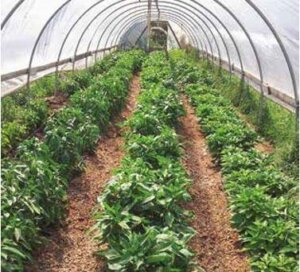
An example of a very simple Quonset-style hoophouse the author built with pipes bought from the hardware store and bent on site. It houses chickens in the winter and basket-weaved peppers and eggplant in the summer.
Whether you have a hoophouse or a greenhouse, if you live in a snowy area you may need to make plans for removing snow from around your structures. In particular, snow tends to build up quickly along the sides of a tunnel as it slides off. This creates two problems. When the piles build up along the sides, they may interfere with the smooth shedding of snow off the roof.
Second, the piles can get so high and heavy that they start crushing the sides of the structure. This might not seem like a big problem, but tunnels are engineered to support weight from above, not from the sides. Structures have been known to get crushed from the side when snow piles get too big.
If you have multiple tunnels next to each other, and they are close enough that the shedding snow piles combine, the piles will build up more quickly and may need to be removed more frequently. Have a plow or snowblower on hand to move the snow, and a plan for where to put it.
Cutting the Plastic
There is one last-ditch method you can use to save a structure in the event that snow is building up faster than it can be removed, or if heaters fail during a snowstorm. If you think that collapse is imminent, slitting the plastic from inside can save the structure at the expense of the covering. Snow and plastic falling into the greenhouse may cause damage and will most likely kill any existing crops. But it’s a better option than crushing the structure.
Recommended Reads
Recent Articles
No heated greenhouse? No problem! Discover the secrets to thriving winter gardening without breaking the bank.
Read MoreWintergreen is the stunning evergreen groundcover that’s a game-changer for your garden! It’s cherished for its aromatic leaves, vibrant fall color & bright berries.
Read MoreYear-round growth without the hefty price tag of a greenhouse? Low tunnels are the cost-effective and flexible solution you’ve been looking for. Grow year-round with low tunnels!
Read MoreGrow winter carrots for a sweeter & more flavorful harvest! Ditch the bland, store-bought carrots this winter! Grow your own winter carrots for a sweeter and more flavorful twist 🥕🥕
Read More

